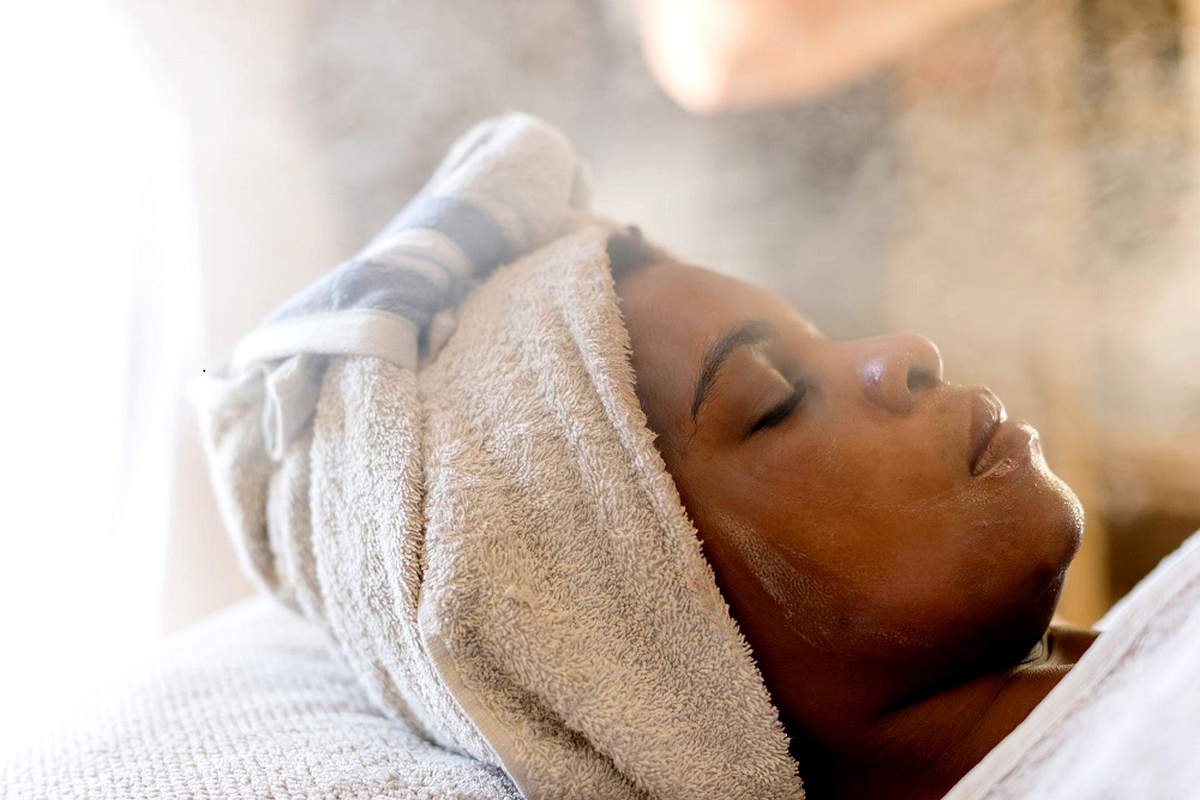THE outbreak of the COVID-19 pandemic has kept the world on its toes, as it tries to find a cure for the fatal disease. In its wake, the virus which reportedly originated in the province of Wuhan in China has left millions of people dead across the length and breadth of the world.
health
Feb. 5, 2021
PALO MOHLOTSANE
5 min read
Steam inhalation procedure does wonders to flu patients

The virus has touched millions of lives in a negative way as economies and the general livelihoods of people were destroyed when scores of businesses across the globe were shut down, with hundreds of jobs destroyed.
As the pandemic rapidly spreads its tentacles, the entire global health sector has on the other hand been rendered utterly frustrated.
In a bid to curb the skyrocketing spread of the virus, governments restricted movements through hard lockdowns and the enactment of mitigation strategies as well as regulations.
Many people continue to test positive for COVID-19 and others succumb to COVID-19 related complications.
The rate at which people die in the hands of health professionals is alarming with many others also dying in their homes.
The second wave of the pandemic is causing more ripples of fear among the populace, with many opting not to get tested, self-isolated or quarantined at allocated facilities.
Until Lesotho like its neighbour South Africa also get a COVID-19 vaccine, the only recommended prevention measures remain physical distancing and enhanced hygiene.
A lot of people who show symptoms of the virus or those who have contracted flu are now resorting to indigenous herbs and other known home remedies instead of utilising the conventional medication.
Others simply use steam inhalation procedure which is highly recommended by local health practitioners, including nurses and medical doctors.
Nursing Sister Busa Qhala, a nurse at the Red Cross Health Centre in Thaba-Bosiu says steam inhalation procedure is an effective home remedy normally used to smoothen and open the nasal passages.
The procedure he says can be used to get relief and fast recovery from common cold, or sinuses and coronavirus related symptoms or infections.
Qhala who is also the Public Relations Officer of the Lesotho Nurses Association (LNA) says the procedure involves the inhalation of water vapour for some period of time.
“It increases circulation and stimulates expectoration. It also loosens secretions and congestion. It is useful in many complications like lung congestion, sore throats and dry mucous membrane,” he further shows.
He adds: “However, people should note that the steam inhalation procedure won’t cure an infection like cold, corona or flu but may help a patient to feel better while the antibodies fight the virus.”
The infection, he says causes inflammation in the blood system, blocking normal air entry and causing insufficient oxygen supply to the lungs.
He says steam inhalation helps ease that feeling of irritation and swollen blood vessels in the nasal passages and restores normal breathing patterns.
“The moisture also helps thin mucus to empty more easily. It helps unblock congested noses, alleviates headaches and throat irritation,” Nursing Sister Qhala also notes.
He says generally, steam inhalation procedure is ideal for easing congestion caused by the infection and further relieves symptoms of upper respiratory tract infection problems.
“Steam inhalation is one of the most important and effective ways to fighting COVID-19 as the steam does not go through an individual’s bloodstream thus protecting vital organs,” he says.
Dr Mwamba Kwadi, a medical practitioner based at the Katse Health Clinic says steam inhalation cycles are considered to be useful in damaging the capsule (breaking down the viral envelope) of the virus.
As a medical doctor, he highly recommends the steam inhalation procedure as a home therapy to fight the spread of COVID19.
Although Tšeliso Kheleli did not test for COVID-19, he however, had contact with a friend who tested positive to the disease.
“I never went for testing but I decided to do the steaming therapy after I came down with a severe flu. I also consistently used other home remedies and within two days, the flu had subsided,” he testifies.
He describes the procedure as the best and cheapest therapy for treating flu and other lung complications, recommending it to COVID-19 patients.
Sharing similar sentiments, Mpho Serobanye who was also in contact with a person who tested positive for COVID-19 used the same procedure too.
“The police officer I had been in contact with died from COVID-19 related complications and someone advised me to use steam inhalation procedure to be on the safe side.
“Another time, I was in a taxi whose driver later died from similar complications and as a chronic asthma patient, I became worried about contracting COVID-19 as well, hence, I immediately agreed to use steam inhalation procedure religiously,” he said.
But he quickly warns that as much as the procedure is suitable for flu related illnesses, it can also burn the skin if not done safely and properly.
Enjoy our daily newsletter from today
Access exclusive newsletters, along with previews of new media releases.
According to the healthline.com, steaming was popularly used for skin therapy and treatment and therefore has too many benefits that include among others opening of pores.
It also helps loosen any build-up of dirt for a deeper skin cleansing, promotion of circulation, releases acne-causing bacteria and cells, and helps with sinus congestion.
A Journal by Life Sciences titled, Thermal inactivation of SARS COVID-2 virus: Are steam inhalations a potential treatment states that, if steam inhalation is performed soon after contagion, that would reduce the risk of progression to full blown infection.
“However, contagion occurs most often unknowingly, which does not allow a timely preventive procedure, unless carried on systematically in at risk individuals (for example healthcare professionals working in COVID units or personnel in contact with the public).”
The study suggests that a protocol based on cycles of steam inhalation at temperature 55–65 ◦C might indeed be beneficial in halting SARS-CoV-2 virus infection in the upper airway mucosae during the initial stages of infection and possibly preventing further spread.
“It could also be helpful in pauci-symptomatic subjects during the last period of infection, when the immune system is already active against the virus but its presence is still detectable in the upper respiratory tract. Since steam cannot reach the bronchial tree, bronchi and lungs, it is unlikely it could be beneficial once the infection has reached the deep internal airway mucosa,” the article states.
However, the protocol done by medical practitioners on patients cannot be intended to lead to an eradication of the virus from the body, as the steam inhalation procedure can only reach upper airways.
The proposed steam inhalation cycles are also considered safe (provided care is used against the possible burns, especially in children), inexpensive and easily self-managed. This simple approach, only tested in a small sample and in a biased population, might help easing the consequences of SARS-CoV-2 infection, if applied early in at-risk individuals in whatever healthcare setting, especially in low income countries with limited access to equipped hospitals or intensive care units.






